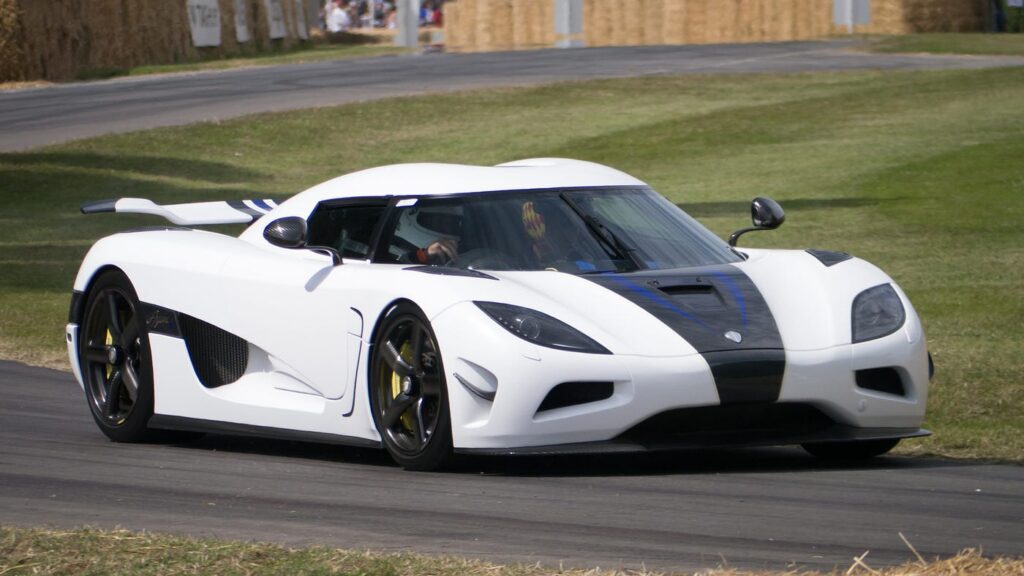
The world of automotive appreciation often finds itself at a fascinating crossroads, particularly when comparing the nostalgic sentiments of Baby Boomers with the practical and environmentally conscious perspectives of Millennials. For older enthusiasts, classic cars from the 1960s, 70s, and 80s evoke powerful memories of a bygone era—a time of bold design, unbridled power, and a distinctly American approach to luxury. These vehicles, often celebrated as icons, represent tangible pieces of history, embodying the societal values and technological aspirations of their production years.
However, as generations evolve, so do the criteria for what constitutes a desirable vehicle. What one generation views as a symbol of freedom or innovation, another might see as an outdated relic, fraught with inefficiencies, safety concerns, or simply a lack of modern appeal. The automotive landscape has shifted dramatically, now emphasizing fuel economy, advanced safety features, sophisticated technology, and a more refined driving experience.
This stark difference in priorities has created a significant generational gap in what’s considered a “cool ride.” Many once-revered Boomer classics now struggle to capture the imagination of younger car enthusiasts. In this deep dive, we’ll explore 15 such vehicles, dissecting the hidden factors behind this disinterest and revealing the evolving narrative of automotive culture and how practicality, aesthetics, and values shape our perception of cars.
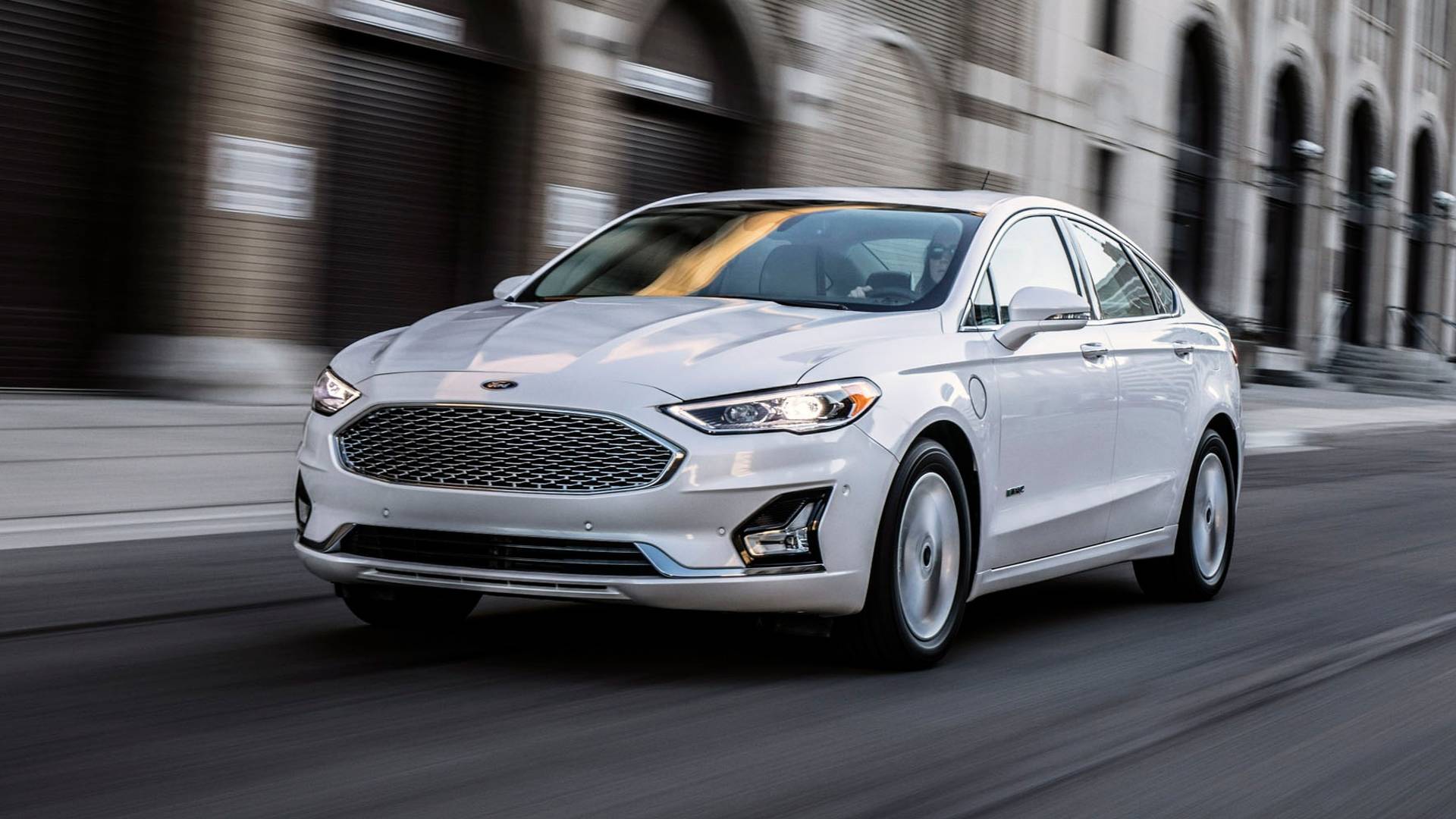
1. **Ford Mustang II: A Divisive Legacy**For many Baby Boomers, the Ford Mustang II holds a particular place in their automotive memories, representing Ford’s pragmatic response to the fuel crisis era. It was an attempt to keep the iconic Mustang lineage alive by offering a smaller, more economical package. Boomers might recall its practicality and its role in ensuring the Mustang nameplate continued through challenging times, viewing it as a necessary evolution rather than a complete departure from the brand’s spirit. It adapted to new economic realities, a sensible choice then.
Millennials, however, are far less forgiving, largely criticizing the Mustang II for straying too far from the original’s muscle car roots. Its underwhelming performance, especially compared to its powerful predecessors, and a design often deemed bland and uninspired, makes it a difficult sell. Built on the Pinto platform, it failed to deliver the thrilling driving experience and aggressive aesthetic that defined earlier Mustangs, leaving younger enthusiasts with disappointment rather than nostalgia for an automotive icon.
Ultimately, the Mustang II serves as a poignant example of how historical context influences perception. While a pragmatic solution for its time, celebrated by some Boomers for its survival against the odds, Millennials primarily view it as a dilution of a legend. They see a car prioritizing sensibility over the passion and performance that originally made the Mustang an automotive titan, firmly establishing it as a classic Boomer car Millennials actively avoid.
Car Model Information: 2022 Toyota Tacoma SR5
Name: Second generation
Caption: Ford Mustang II coupe
Aka: Ford Mustang II , Ford T5 (in Germany)
Class: Pony car,Subcompact car
Production: 1973–1978
ModelYears: 1974–1978
Predecessor: Ford Mustang (first generation)
Successor: Ford Mustang (third generation)
Assembly: Unbulleted list
Layout: Front-engine, rear-wheel-drive layout
BodyStyle: coupé,hatchback
Related: Ford Pinto,Ford Pinto
Manufacturer: Ford Motor Company
Engine: ubl
Transmission: ubl
Wheelbase: cvt
Length: cvt
Width: cvt
Height: cvt
Designer: Buck Mook, Dick Nesbitt
Categories: All articles with dead external links, All articles with unsourced statements, Articles with dead external links from April 2024, Articles with permanently dead external links, Articles with short description
Summary: The second-generation Ford Mustang, marketed as the Ford Mustang II, is a two- or three-door, four-passenger, front-engine/rear-drive pony car manufactured and marketed by Ford from 1973 until 1978. Introduced in September 1973 for the 1974 model year, the Mustang II arrived roughly coincident with the oil embargo of 1973 and subsequent fuel shortages. Developed under Lee Iacocca, it was an “entirely new kind of pony car.” Ford “decided to call it Mustang II, since it was a new type of pony car designed for an era of high gas prices and fuel shortages.”
The Mustang II was 490 lb (222 kg) lighter and almost 19 in (483 mm) shorter than the 1973 Mustang, and derived from the subcompact Pinto platform. While sharing a limited number of driveline components with the Pinto, the Mustang II employed an exclusive subframe, isolating its front suspension and engine mount subframe. The steering used a rack-and-pinion design.
Named Motor Trend’s 1974 Car of the Year and reaching over 1.1 million sales over four years of production, the Mustang II is noted simultaneously for both its marketing prescience and strong sales – while criticized as having abandoned essential aspects of the Mustang heritage and described, in a retrospective after 40 years since its introduction, as embodying the Malaise era.
Get more information about: Ford Mustang (second generation)
Buying a high-performing used car >>>
Brand: Ford Model: Mustang II
Price: $25,987 Mileage: 57,020 mi.
Read more about: Gone But Not Forgotten: Unearthing the Stories Behind 14 Iconic American Cars That Drove Off into the Sunset

2. **Cadillac Seville: An Emblem of Excess**The Cadillac Seville occupies a significant space in the memories of many Baby Boomers, symbolizing an era when American luxury sedans epitomized comfort and style. Introduced in the mid-1970s, it represented Cadillac’s effort to offer a more compact, yet still opulent, package to compete with European luxury cars. Boomers fondly recall the Seville as a premium American sedan that delivered a plush ride, generous interior space, and a dignified presence, cementing its status as a symbol of aspirational success.
However, for Millennials, the Cadillac Seville often embodies the excesses of past American automotive design. Its substantial size, while offering comfort, clashes sharply with contemporary values favoring smaller, more agile, and environmentally conscious vehicles. The Seville’s inherent fuel inefficiency, a product of an era less concerned with stringent emissions and high fuel costs, is a major point of contention for a generation focused on sustainability and practical cost-effectiveness in their daily drivers.
The Seville’s aesthetic also contributes to its dismissal; what Boomers might appreciate as classic grandeur, Millennials often find dated and overly ornate. This disconnect in design preference, combined with practical drawbacks like poor fuel economy and challenging maneuverability in urban environments, ensures the Seville remains largely undesirable. It stands as a testament to how shifting cultural priorities can transform a celebrated luxury icon into a vehicle primarily relegated to historical appreciation for younger generations.
Car Model Information: 2000 Cadillac Seville Base
Name: Cadillac Seville
Caption: 1998–2004 Cadillac Seville
Manufacturer: Cadillac
Production: 1975–2003
ModelYears: 1976–2004
Class: luxury car
Layout: FR layout
Predecessor: Cadillac Calais
Successor: Cadillac STS
Categories: 1980s cars, 1990s cars, All articles with unsourced statements, Articles with short description, Articles with unsourced statements from October 2016
Summary: The Cadillac Seville is a mid-size luxury car manufactured by Cadillac from the 1976 to 2004 model years as a smaller-sized, premium model. It was replaced by the STS in 2004 for the 2005 model year.
Get more information about: Cadillac Seville
Buying a high-performing used car >>>
Brand: Cadillac Model: Seville
Price: $14,000 Mileage: 126,722 mi.
Read more about: 12 Classic Boomer Cars Millennials Avoid: The Hidden Factors Behind Younger Generations’ Disinterest

3. **Chevrolet Corvair: Innovation Met with Controversy**For many Baby Boomers, the Chevrolet Corvair represented a bold, innovative departure from conventional American automotive design, captivating them with its unique engineering. Its rear-mounted, air-cooled engine and sleek, European-inspired aesthetic were a significant risk for General Motors, offering a compact and nimble alternative to the era’s large-bodied, front-engine cars. The Corvair was initially celebrated for its forward-thinking approach, embodying a spirit of distinctiveness and engineering ambition in its class.
Despite its innovative spirit, the Corvair’s legacy is unfortunately overshadowed by controversy, primarily concerning its handling characteristics and safety. Millennials, who have grown up with stringent safety standards and advanced vehicle dynamics, often associate the Corvair more with its problematic reputation than its unique design. The early models’ swing-axle rear suspension, which could lead to unpredictable oversteer, contributed to its image as a vehicle with inherent safety concerns.
Consequently, the Chevrolet Corvair remains largely unloved by younger enthusiasts. The historical handling issues and safety concerns, whether fully understood or simply absorbed through cultural osmosis, have effectively overshadowed its innovative aspects. It serves as a stark reminder that even groundbreaking design, if compromised by fundamental safety or reliability shortcomings, can struggle to find lasting appeal across generations, particularly among those who prioritize modern driving assurance.
Car Model Information: 1964 Chevrolet Corvair Monza
Caption: 1964 Chevrolet Corvair Monza
Name: Chevrolet Corvair
Manufacturer: Chevrolet
Production: July 1959
Platform: GM Z platform
Chassis: Unibody
ModelYears: 1960–1969
Assembly: United States,Kansas City, Missouri,Oakland, California,Van Nuys,St. Louis,Flint, Michigan,Belgium,Canada,Mexico,South Africa,Switzerland,Venezuela
Class: Compact car
Successor: Chevrolet Vega
Layout: Rear-engine, rear-wheel-drive layout
Categories: All Wikipedia articles written in American English, All articles lacking in-text citations, All articles needing additional references, All articles with dead external links, All articles with specifically marked weasel-worded phrases
Summary: The Chevrolet Corvair is a rear-engined, air-cooled compact car manufactured and marketed by Chevrolet over two generations from the 1960 through 1969 model years. The Corvair was a response to the increasing popularity of small, fuel-efficient automobiles, particularly the imported Volkswagen Beetle and American-built compacts like the Rambler American and Studebaker Lark.
The first generation (1960–1964) was offered in four-door sedan, two-door coupe, convertible, and four-door station wagon configurations. A two- and four-door hardtop, as well as a convertible, were available as second-generation variants (1965–1969). The Corvair platform was also offered as a subseries known as the Corvair 95 (1961–1965), which consisted of a passenger van, commercial van, and pickup truck variant. Total production was approximately 1.8 million vehicles from 1960 until 1969.
The name “Corvair” was first applied in 1954 to a Corvette-based concept with a hardtop fastback-styled roof, part of the Motorama traveling exhibition. When applied to the production models, the “air” part referenced the engine’s cooling system.
A prominent aspect of the Corvair’s legacy derives from controversy surrounding the handling of early models equipped with rear swing axles, articulated aggressively by Ralph Nader’s Unsafe at Any Speed but tempered by a 1972 Texas A&M University safety commission report for the National Highway Traffic Safety Administration (NHTSA) which found that the 1960–1963 Corvair possessed no greater potential for loss of control in extreme situations than contemporary compacts.
To better counter popular inexpensive subcompact competitors, notably the Beetle and Japanese imports such as the Datsun 510, GM replaced the Corvair with the more conventional Chevrolet Vega in 1970.
Get more information about: Chevrolet Corvair
Buying a high-performing used car >>>
Brand: Chevrolet Model: Corvair
Price: $29,988 Mileage: 74,787 mi.
Read more about: Beyond the Blink: How a Ford Camera Glitch Uncovers Systemic Engineering Failures and the Lingering Shadows of Automotive Design Mistakes
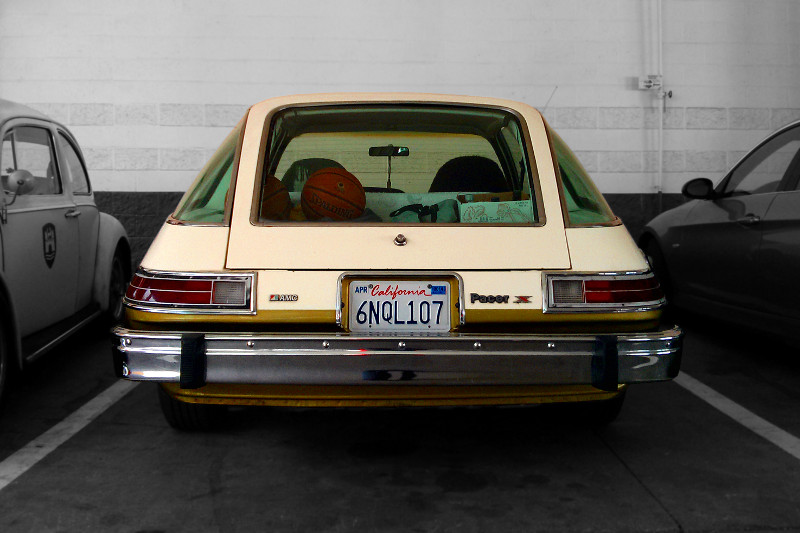
4. **AMC Pacer: A “Bubble” of Ambition**The AMC Pacer represents a truly unconventional chapter in 1970s American automotive design. For Baby Boomers, particularly those who valued innovation and a departure from the norm, the Pacer was initially touted for its unique styling and audacious attempt to redefine the compact car. Its wide body, extensive glass area, and distinctive “bubble-like” appearance were aimed at offering unparalleled interior spaciousness and visibility, making it a curious object of fascination for those seeking originality on the road.
However, this very distinctiveness is precisely what alienates Millennials. Younger generations frequently regard the Pacer as oddly shaped and aesthetically perplexing, often making fun of its truly unique, almost cartoonish, appearance. What Boomers might have seen as bold, Millennials often interpret as ungainly and disproportionate. The Pacer’s attempt at breaking the mold is now largely viewed as a significant misstep in design, positioning it as a historical oddity rather than a desirable classic for today’s market.
Beyond its polarizing looks, the Pacer also suffers from perceptions of inefficiency, a critical drawback for Millennials who prioritize fuel economy. Its bulbous form and often lackluster powertrain options fail to align with modern preferences for sleek, efficient vehicles. The Pacer’s legacy, therefore, is a clear illustration of how design philosophies can dramatically age, transforming what was once a daring individualist into a symbol of questionable taste and design folly for younger generations.
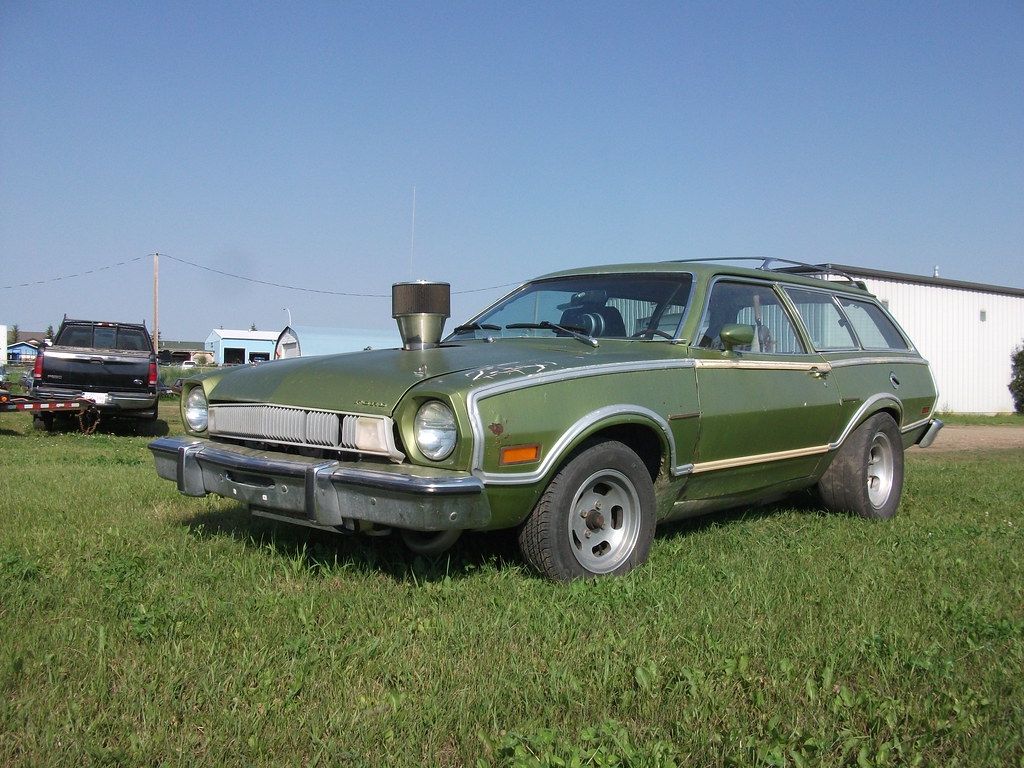
5. **Ford Pinto: The Shadow of Safety Concerns**For many Baby Boomers, the Ford Pinto resonated as an affordable, compact, and practical car during the 1970s, fulfilling a genuine need for economical transportation. Boomers might reminisce about its low purchase price and its role as a reliable starter or secondary family vehicle, appreciating its straightforward utility at the time. It was a mass-market car designed to be accessible and efficient, a common sight on American roads that served a clear purpose.
However, the enduring legacy of the Ford Pinto is tragically linked to its severe safety issues, making it an immediate red flag for Millennials. Younger generations almost exclusively associate the Pinto with the notorious risk of its fuel tank catching fire upon rear impact. This critical design flaw, widely publicized and the subject of major legal battles and recalls, casts a long and dark shadow over any potential nostalgic appeal the car might otherwise have possessed, negating its original intent.
The gravity of these safety concerns is a primary driver of Millennial disinterest. Having grown up with stringent modern safety standards, the idea of a car with a fundamental, life-threatening design flaw is simply unacceptable. This historical stigma, coupled with readily available information about the company’s knowledge of the defect, profoundly impacts their perception, ensuring the Pinto remains one of the classic Boomer cars that younger generations consistently and vehemently avoid, prioritizing safety above all else.
Car Model Information: 1980 Ford Pinto WAGON
Name: Ford Pinto
Caption: Ford Pinto
Manufacturer: Ford Motor Company
Aka: Mercury Bobcat
Production: September 1970 – July 1980
ModelYears: 1971–1980 (Pinto),1974–1980 (Bobcat)
Assembly: Edison, New Jersey,Milpitas, California
Designer: Robert Eidschun (1968)
Class: Subcompact car
BodyStyle: Sedan (automobile),sedan delivery,station wagon,hatchback
Related: #Mercury Bobcat (1974–1980),Ford Mustang (second generation)
Layout: Front-engine, rear-wheel-drive layout
Chassis: Unibody
Engine: unbulleted list
Abbr: on
Disp: Ford Cologne engine
Transmission: unbulleted list
Wheelbase: 94.0 in
Length: 163 in
Width: 69.4 in
Height: 50 in
Weight: convert
Predecessor: Ford Cortina#Mark II (1966–1970)
Successor: Ford Escort (North America)
Categories: 1980s cars, Articles with short description, Cars discontinued in 1980, Cars introduced in 1970, Commons category link from Wikidata
Summary: The Ford Pinto is a subcompact car that was manufactured and marketed by Ford Motor Company in North America from 1970 until 1980. The Pinto was the first subcompact vehicle produced by Ford in North America.
The Pinto was marketed in three body styles throughout its production: a two-door fastback sedan with a trunk, a three-door hatchback, and a two-door station wagon. Mercury offered rebadged versions of the Pinto as the Mercury Bobcat from 1975 until 1980 (1974–1980 in Canada). Over three million Pintos were produced over its ten-year production run, outproducing the combined totals of its domestic rivals, the Chevrolet Vega and the AMC Gremlin. The Pinto and Mercury Bobcat were produced at Edison Assembly in Edison, New Jersey, St. Thomas Assembly in Southwold, Ontario, and San Jose Assembly in Milpitas, California.
Since the 1970s, the safety reputation of the Pinto has generated controversy. Its fuel-tank design attracted both media and government scrutiny after several deadly fires occurred when the tanks ruptured in rear-end collisions. A subsequent analysis of the overall safety of the Pinto suggested it was comparable to other 1970s subcompact cars. The safety issues surrounding the Pinto and the subsequent response by Ford have been cited widely as business ethics and tort reform case studies.
Get more information about: Ford Pinto
Buying a high-performing used car >>>
Brand: Ford Model: Pinto
Price: $5,951 Mileage: 107,000 mi.
Read more about: Navigating the Road: Unpacking 14 Vehicles Known for Sketchy Driver Reputations and Notorious Reliability Issues

6. **AMC Gremlin: Unconventional Aesthetics and Performance**The AMC Gremlin is another classic Boomer car that vividly illustrates the generational divide in automotive taste. For many Baby Boomers, its unique design evokes a certain nostalgia, a reminder of an era when American Motors Corporation dared to experiment with unconventional styling. The Gremlin, with its distinctive truncated rear, was an attempt at creating a compact, economical, and sporty subcompact, and its quirky individuality was part of its charm for those who embraced its difference on the road.
However, for Millennials, the Gremlin’s unusual aesthetics are often a major deterrent. Younger generations tend to dislike its highly distinctive and, to their eyes, awkward appearance. What Boomers might remember as bold or unique, Millennials often perceive as simply ungainly or poorly proportioned. The chop-off rear end and overall silhouette, which aimed to be distinctive, now often elicit amusement or bewilderment, making it a challenging car to appreciate for its visual appeal in a contemporary context.
Beyond its polarizing looks, the AMC Gremlin also suffered from less-than-stellar performance metrics. While intended to be an economical option, its engine choices rarely provided exciting power or engaging driving dynamics. This lack of respectable performance further diminishes its appeal, making it difficult for younger enthusiasts to see past its aesthetic quirks. The Gremlin, despite its distinctiveness, ultimately fails to capture the imagination or meet the practical and aesthetic demands of a younger generation, firmly placing it on the list of avoided classics.
Read more about: 12 Classic Boomer Cars Millennials Avoid: The Hidden Factors Behind Younger Generations’ Disinterest

7. **Dodge Coronet: Simplicity Lost in Grandeur**For many Baby Boomers, the Dodge Coronet embodied a straightforward, reliable, and solid family car, a dependable workhorse that served its purpose without much fuss or pretense. It was a vehicle that simply got the job done, offering a sense of security and practicality for everyday life. In an era where automotive choices often reflected societal roles, the Coronet was a sensible, unpretentious option that resonated with a generation valuing reliability above ostentation. Its presence was widespread, a familiar sight on suburban streets and highways alike, a testament to its everyday utility and accessibility.
However, Millennials approach the Coronet through a different lens, often dismissing it for a design they perceive as plain and uninspired. In their quest for vehicles that offer either distinctive styling, engaging performance, or cutting-edge technology, the Coronet’s traditional aesthetic often falls short. Its large size, while offering ample interior space, is also a significant drawback for a generation that prioritizes agility, ease of parking in increasingly congested urban environments, and a smaller environmental footprint. The sheer physical presence of the Coronet, once a hallmark of American family cars, now appears out of sync with contemporary automotive values.
This generational disconnect highlights a fundamental shift in what consumers seek in a vehicle. What Boomers saw as dependable, Millennials view as dated; what was once practical, is now often deemed inefficient. The Coronet, in its straightforward design and robust build, encapsulates an era of less complex automotive desires. Yet, for younger enthusiasts accustomed to sleeker lines and more dynamic driving experiences, its plain aesthetic and substantial dimensions prevent it from sparking the kind of passion that might bridge the generational gap in automotive appreciation. It remains a testament to a different set of priorities.
Car Model Information: 1956 Dodge Coronet
Name: Dodge Coronet
Caption: 1967 Dodge Coronet R/T
Manufacturer: Dodge
Production: 1949–1959,1965–1976
Class: Full-size
Predecessor: Dodge Custom
Successor: Dodge Dart
Layout: FR layout
Categories: 1950s cars, 1970s cars, All articles with dead external links, All articles with unsourced statements, Articles with dead external links from June 2016
Summary: The Dodge Coronet is an automobile that was marketed by Dodge in seven generations, and shared nameplates with the same bodyshell with varying levels of equipment installed. Introduced as a full-size car in 1949, it was the division’s highest trim line and moved to the lowest level starting in 1955 through 1959. The name was reintroduced on intermediate-sized models from the 1965 until 1976 model years. Muscle car versions were available starting in 1965 with the 383 and 426 wedge cu in (7.0 L) Chrysler RB engine, followed in 1966 by the powerful 426 cu in (7.0 L) Chrysler Hemi. Other performance models included the “Superbee”, and featured, the 383 cu in (6.3 L) Magnum, among other engine options. The nameplate “coronet” is a type of crown worn by royalty.
In the 1980s, the Coronet was used on Dodge models marketed in Colombia.
Get more information about: Dodge Coronet
Buying a high-performing used car >>>
Brand: DODGE Model: Coronet
Price: $19,999 Mileage: 66,917 mi.
Read more about: 12 Classic Boomer Cars Millennials Avoid: The Hidden Factors Behind Younger Generations’ Disinterest

8. **Cadillac Eldorado: Opulent Legacy, Modern Burden**The Cadillac Eldorado, particularly in its heyday, was much more than just a car; it was a powerful symbol of American luxury and aspirational success, cherished by Baby Boomers for its sheer opulence and unparalleled comfort. With its massive V8 engines and lavishly appointed interiors, the Eldorado was a rolling declaration of status, offering a grand touring experience that was both smooth and commanding. Boomers remember it as the pinnacle of automotive extravagance, a statement piece that perfectly captured the spirit of an era of abundant resources and bold design.
Yet, for Millennials, the very attributes that made the Eldorado a legend now serve as its biggest detractors. Its enormous size, once a hallmark of luxury, is now seen as cumbersome and impractical for modern driving. Maneuvering such a substantial vehicle in today’s tighter parking spaces and crowded city streets presents a significant challenge. Furthermore, its notoriously poor fuel economy, a direct consequence of those powerful V8 engines, clashes sharply with the Millennial generation’s growing emphasis on environmental consciousness and sustainable transportation.
The high maintenance costs associated with keeping these complex, older luxury machines running smoothly also factor heavily into Millennial disinterest. While the Eldorado’s classic design and plush interiors might hold some visual appeal, the practical drawbacks—the constant need for fuel, the expensive repairs, and the sheer footprint of the car—collectively diminish its attractiveness. It stands as a vivid example of how changing priorities, from unbridled luxury to environmental responsibility and cost-effectiveness, can relegate a former icon to the sidelines of contemporary automotive desirability.
Car Model Information: 1976 Cadillac Eldorado Convertible
Caption: 1963 Cadillac Eldorado Convertible
Name: Cadillac Eldorado
Manufacturer: Cadillac
Production: 1952–2002
Layout: Front-engine, rear-wheel-drive layout
Aka: Cadillac Fleetwood Eldorado
Class: Personal luxury car
Successor: Cadillac CTS
Categories: 1960s cars, 1970s cars, 1980s cars, 1990s cars, 2000s cars
Summary: The Cadillac Eldorado is a luxury car manufactured and marketed by the Cadillac Motor Car Division of General Motors from 1952 until 2002, over twelve generations.
The Eldorado was at or near the top of the Cadillac product line. The original 1953 Eldorado convertible and the Eldorado Brougham models of 1957–1960 had distinct bodyshells and were the most expensive models offered by Cadillac during those years. The Eldorado was never less than second in price after the Cadillac Series 75 limousine until 1966. Beginning in 1967, the Eldorado retained its premium position in the Cadillac price structure, but was manufactured in high volumes on a unique, two-door personal luxury car platform.
The Eldorado carried the Fleetwood designation from 1965 through 1972, and was seen as a modern revival of the pre-war Cadillac V-12 and Cadillac V-16 roadsters and convertibles.
Get more information about: Cadillac Eldorado
Buying a high-performing used car >>>
Brand: Cadillac Model: Eldorado
Price: $28,499 Mileage: 31,898 mi.
Read more about: Unpacking the Generational Divide: 9 Iconic Boomer Cars Young Drivers Are Skipping and Why
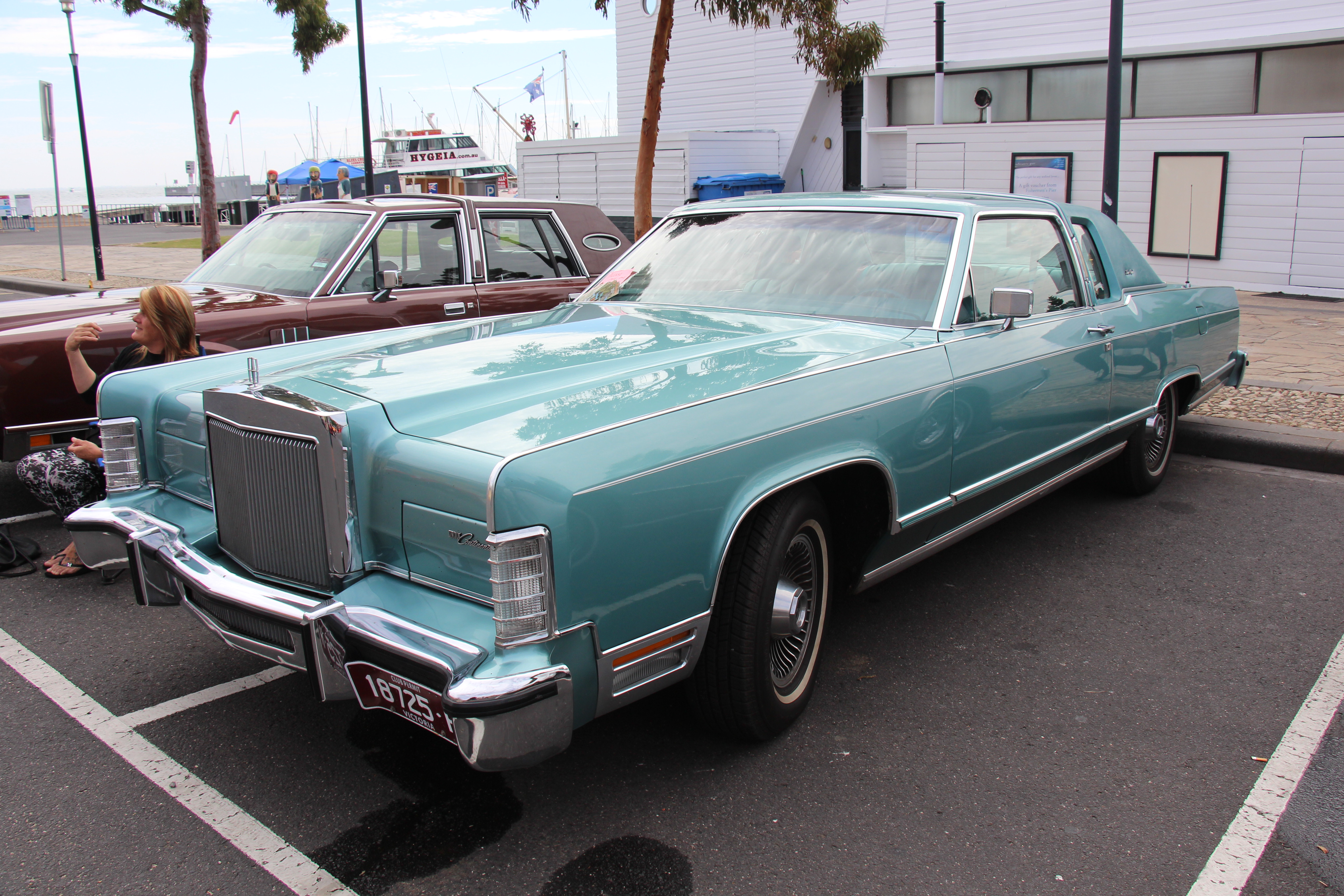
9. **Lincoln Continental Mark IV: Grandeur Versus Green**For many Baby Boomers, the Lincoln Continental Mark IV, produced from 1972 to 1976, represented the epitome of personal luxury and sophisticated styling. It was known for its distinctive design, highlighted by iconic opera windows and a long, sleek body that exuded an air of dignified presence. Powered by a formidable 460 cubic inch V8 engine, the Mark IV delivered a smooth, powerful ride that became synonymous with American automotive grandeur. Boomers admired its spacious, luxurious interior and the overall feeling of exclusivity it provided, making it a truly aspirational vehicle.
However, Millennials tend to approach the Mark IV with a mixture of curiosity and disinterest, often viewing its considerable size as a significant impediment. The very length and width that once signified prestige now feel cumbersome and impractical for today’s urban and suburban landscapes. This generation, accustomed to more agile and efficiently packaged vehicles, struggles to reconcile the Mark IV’s expansive dimensions with their preferences for ease of maneuverability and a smaller physical footprint.
Moreover, the Mark IV’s famously poor fuel economy is a critical point of contention for younger buyers. In an era increasingly defined by environmental awareness and rising fuel costs, a vehicle that consumes gasoline so voraciously represents a stark contrast to contemporary values. Despite its luxurious interior and unique styling, the practical drawbacks of its excessive thirst for fuel and the associated high maintenance costs largely deter Millennials, solidifying its status as a grand, yet ultimately avoided, relic of a bygone automotive philosophy.
As we navigate the generational tides of automotive taste, it becomes clear that not all luxury vehicles are created equal, especially when considering the hidden costs and long-term implications that weigh heavily on younger buyers. While many classic Boomer cars present challenges, the used luxury SUV market introduces its own set of formidable obstacles. Millennials, often operating on tighter budgets and prioritizing sustainability, must exercise extreme caution. In particular, watch out for these used luxury SUVs that often come with deep problems to match the plush seats.
Car Model Information: 2022 Toyota Tacoma SR5
Manufacturer: Lincoln Motor Company
Caption: 1975 Continental Mark IV
Name: Mark IV
Production: 1971–1976
ModelYears: 1972–1976
BodyStyle: coupe
Layout: Front-engine, rear-wheel-drive layout
Engine: 460 cuin
Abbr: on
Assembly: Wixom Assembly,Wixom, Michigan
Transmission: Ford C6 transmission
Predecessor: Lincoln Continental Mark III
Wheelbase: 120.4 in
Length: 228.1 in
Width: 79.8 in
Height: 53.5 in
Weight: convert
Successor: Lincoln Continental Mark V
Related: Ford Thunderbird (sixth generation)
Categories: 1970s cars, All Wikipedia articles needing clarification, Articles with short description, Cars discontinued in 1976, Cars introduced in 1972
Summary: The Continental Mark IV is a personal luxury car that was marketed by the Lincoln division of Ford Motor Company from the 1972 to 1976 model years. The third generation of the Mark series, the Mark IV grew in size over its Continental Mark III predecessor. As with the previous generation, the Mark IV saw little direct competition in the American marketplace, competing nearly exclusively against the Cadillac Eldorado (redesigned for 1971).
As with the Mark III, the Mark IV shared its chassis with the Ford Thunderbird, with the Mark IV receiving its own bodywork below the windows. Hidden headlights and a faux Rolls-Royce chrome grille were retained, and a Continental spare tire trunklid. For 1976, the Designer Series option package was introduced; in what would become a tradition for the Mark series (and later Lincoln), the option consisted of specially coordinated exterior and interior trims developed between Lincoln and contemporary fashion designers.
Ford assembled the Continental Mark IV at its Wixom Assembly Plant in Michigan) facility alongside the Ford Thunderbird and the Lincoln Continental. For 1977, the Mark IV underwent a substantial revision, becoming the Continental Mark V.
Get more information about: Lincoln Continental Mark IV
Buying a high-performing used car >>>
Brand: Lincoln Model: Continental Mark IV
Price: $25,987 Mileage: 57,020 mi.
Read more about: 12 Classic Boomer Cars Millennials Avoid: The Hidden Factors Behind Younger Generations’ Disinterest

10. **Land Rover Range Rover Sport: Status Symbol, Costly Liability**The Land Rover Range Rover Sport is undeniably a powerful status symbol, instantly recognizable for its commanding presence and association with affluence. For many, owning one represents a certain level of achievement and a taste for robust, go-anywhere luxury. Its reputation for blending off-road capability with premium comfort makes it an attractive proposition on the surface.
However, this aspirational image often comes with costs that extend far beyond the initial purchase price, especially when buying used. Alex Black of car research platform EpicVIN notes, “It’s really popular but super unreliable.” This observation directly contradicts the expectation of luxury vehicles maintaining their pristine performance, quickly turning the dream of luxury ownership into a potential nightmare.
The vehicle’s chronic problems are well-documented, making it a financial quagmire for many. Black further elaborates on common failures, stating, “The air suspension malfunctions, infotainment systems freeze and it’s a maintenance nightmare. You’ll be at the mechanic shop way more than on the move.” These are not isolated incidents but represent persistent issues that fundamentally undermine the very notion of luxury ownership and reliable transportation.
This constant need for repairs is starkly illustrated by hard data. J.D. Power’s 2025 dependability study found that Land Rovers experience nearly twice the number of repair problems per 100 vehicles as Lexuses. For Millennials seeking practical, reliable transportation and keen on avoiding unnecessary financial strain, the Range Rover Sport quickly transforms from a desirable status symbol into a profound financial liability.
Car Model Information: 2024 Volkswagen Tiguan 2.0T SE R-Line Black
Name: Range Rover Sport
Assembly: Solihull plant
Designer: Gerry McGovern
Manufacturer: Land Rover Ltd.,Jaguar Land Rover
Production: 2005–present
Class: Executive car,SUV
BodyStyle: SUV
Layout: Front-engine, four-wheel-drive
Successor: Range Rover (L460)
Categories: 2010s cars, 2020s cars, All-wheel-drive vehicles, All Wikipedia articles written in British English, All articles needing additional references
Summary: The Land Rover Range Rover Sport is a mid-size luxury SUV produced by the British manufacturer Land Rover, part of Jaguar Land Rover. Introduced in 2005 with the first-generation L320 model, it was succeeded by the second-generation L494 in 2013, and the third-generation L461 in 2022.
Get more information about: Range Rover Sport
Buying a high-performing used car >>>
Brand: Land Rover Model: Range Rover Sport
Price: $27,995 Mileage: 9,546 mi.
Read more about: Engine of Regret: 14 Car Models That Left Owners Begging for a Trade-In – A Data-Driven Warning
11. **Audi Q5: Style That Comes at a Price**The Audi Q5 stands out as a stylish and sophisticated compact luxury SUV, appealing to those who appreciate German engineering and sleek aesthetics. Its design language and interior refinement offer a premium experience that can be highly attractive on the used market, particularly for those looking to acquire a luxury brand at a more accessible price point. The initial appeal of its elegant lines and comfortable cabin is undeniable.
Yet, underneath its polished exterior, the Q5 harbors significant reliability and cost issues that Millennials, with their focus on practical value, must carefully consider. Melanie Musson, an auto expert with AutoInsurance.org, concedes that while “the Q5 is stylish,” it is also “problematic.” This candid assessment highlights the critical disconnect between perceived luxury and the realities of actual ownership experience.
One significant financial concern for Millennials is the Audi Q5’s rapid depreciation, which means its market value tends to drop quickly after the initial purchase. This undermines its long-term financial viability, as buyers hoping to mitigate costs through resale might find their investment dwindling faster than anticipated. Melanie Musson, an auto expert, further points out that the Q5 “tends to require more repairs than the average SUV,” indicating a higher frequency of maintenance visits.
These frequent repair needs are compounded by the inherent cost structure of luxury automotive service. Musson explains that “luxury car parts, especially those from Germany, tend to be more expensive than domestically made parts,” directly impacting repair bills. Additionally, auto mechanics commonly charge higher labor rates for European luxury brands, transforming what might initially appear to be an accessible luxury SUV into a continuous and often prohibitive financial commitment for the owner.
Car Model Information: 2023 Audi Q5 e 55 S line Premium Plus
Name: Audi Q5
Manufacturer: Audi
Production: 2008–present
Class: Compact executive car,crossover SUV
Layout: Unbulleted list
BodyStyle: Unbulleted list
Categories: 2010s cars, 2020s cars, All-wheel-drive vehicles, All Wikipedia articles written in British English, All articles with bare URLs for citations
Summary: The Audi Q5 is a series of compact luxury crossover SUVs produced by the German luxury car manufacturer Audi from 2008. The original first-generation (Typ 8R) model was the third member of the B8 family to be released after the Audi A5 and fourth-generation A4, all being based on the Audi MLB platform. The second generation Q5 (Typ 80A) debuted in 2018 and shares the Audi MLB Evo platform with the corresponding B9 versions of the A4 and A5.
Get more information about: Audi Q5
Buying a high-performing used car >>>
Brand: Audi Model: Q5
Price: $31,919 Mileage: 54,334 mi.
Read more about: Behind the Dashboard Lights: A MotorTrend Expert Guide to 9 Cars That Are Mechanic Magnets

12. **Audi Q7: Bigger Problems, Bigger Footprint**For those considering a larger luxury SUV, the Audi Q7 might appear as a more spacious alternative to the Q5, offering three rows of seating. Its robust appearance and the promise of more utility could be enticing for families or those needing extra capacity. The brand’s reputation for a refined driving experience and high-quality interiors often draws buyers in with promises of German engineering excellence.
However, opting for the larger Q7 does not insulate buyers from the reliability issues that plague its smaller sibling; in fact, it often magnifies them. Specialist mechanic Alan Gelfand of German Car Depot reports seeing Q7s in his shop “all the time.” He highlights common, serious mechanical failures, stating, “We commonly encounter timing chain tensioner breakdowns together with oil consumption problems and turbo-related issues.” These are not minor fixes but significant, expensive repairs that can quickly diminish any perceived savings from buying used.
Beyond the mechanical headaches, the Q7 presents a particular dilemma for environmentally conscious Millennials, a generation that increasingly prioritizes sustainable choices. Specialist mechanic Alan Gelfand emphatically adds that this demographic “should particularly avoid the Q7” due to its substantial environmental footprint. This advice stems from the vehicle’s inherent design and operational characteristics.
Gelfand clarifies the environmental and economic drawbacks by stating, “Used Q7s consume large amounts of fuel and oil, which makes them unsustainable for both the planet and your budget.” This significant consumption not only contributes to higher emissions but also translates directly into elevated running costs. The combination of frequent, expensive repairs, poor fuel economy, and its documented environmental impact makes the Audi Q7 a distinctly unattractive and counter-productive option for Millennials prioritizing sustainability and financial prudence.
Car Model Information: 2023 Audi Q7 45 Premium Plus
Name: Audi Q7
Manufacturer: Audi AG
Production: November 2005–present
ModelYears: 2006–present
Class: Full-size,luxury SUV
BodyStyle: SUV
Layout: Longitudinal engine,front-engine, four-wheel-drive
Sp: uk
Categories: 2010s cars, 2020s cars, All-wheel-drive vehicles, All Wikipedia articles written in British English, All articles with dead external links
Summary: The Audi Q7 is a crossover SUV made by the German manufacturer Audi, unveiled in September 2005 at the Frankfurt Motor Show. Production of this seven-seater SUV began in November 2005 at the Volkswagen Bratislava Plant in Bratislava, Slovakia.
The Q7 was the first SUV sold by Audi and went on sale in 2006. Later, Audi’s second SUV, the Q5, was unveiled as a 2009 model. Audi has since unveiled a third SUV model, the Q3, which went on sale in the third quarter of 2011, and a fourth SUV model, the Q2, which went on sale in November 2016. The Q7 shares a Volkswagen Group MLB platform and chassis with the Bentley Bentayga, Lamborghini Urus, Porsche Cayenne and the Volkswagen Touareg.
The Q7 is the second largest vehicle from Audi, being surpassed by the Q6 since 2022. While the Q7 has been the flagship SUV in Audi’s product portfolio, a top-of-the-line model with a lower roof, called the Audi Q8, was released in 2018.
It was one of the vehicles involved in the Volkswagen emissions scandal, with the company ordered to buy back some of the affected cars manufactured between 2009 and 2012. The Q7 is also subject to hundreds of NTSB complaints with many relating to potentially catastrophic engine failure issues, and a class-action lawsuit related to squealing brakes.
Get more information about: Audi Q7
Buying a high-performing used car >>>
Brand: Audi Model: Q7
Price: $34,710 Mileage: 53,211 mi.

13. **BMW X5: The Costly Illusion of Driving Pleasure**BMW has mastered the art of marketing, cultivating an image of superior driving dynamics and luxury that has resonated with generations. The X5, with its athletic stance and sophisticated design, certainly looks “slick,” as Alex Black observes, promising an engaging driving experience. Its brand prestige and perceived engineering excellence can make a used X5 an appealing choice for those wanting to enter the luxury SUV segment.
However, the allure of BMW’s “Ultimate Driving Machine” often comes with a severe dose of reality in the form of exorbitant repair costs once these vehicles begin to age. Alex Black lists a litany of typical problems that plague the X5 as it gets older: “Timing chain problems, oil leak causing gaskets, electronic malfunctions — all usual suspects.” These are not minor inconveniences but systemic issues that demand costly interventions and expert attention.
The financial burden for X5 owners is further exacerbated by the brand’s premium pricing strategy for both replacement parts and specialized labor. Alex Black emphasizes this point, warning that “expensive parts and labor for BMWs compound the problem,” meaning that even routine maintenance can quickly escalate into a substantial expense. This financial reality often comes as a shock to those drawn in by the initial used purchase price.
Black offers direct, pragmatic advice for younger buyers contemplating a used X5: “Millennials on a strict budget should avoid it unless they have a second vehicle (and a second paycheck).” This stark recommendation underscores the critical point that a used BMW X5, despite its initial appeal and driving pleasure, can swiftly transform into a significant drain on personal finances, making it an impractical choice for budget-conscious Millennials who need reliable and affordable daily transportation.
Car Model Information: 2019 BMW X5 xDrive40i
Name: BMW X5
Manufacturer: BMW
Class: Mid-size,luxury vehicle,crossover SUV
BodyStyle: SUV
Production: 1999–present
Layout: Front-engine, four-wheel-drive layout,Front-engine, rear-wheel-drive layout
Categories: 2000s cars, 2010s cars, All-wheel-drive vehicles, All articles with unsourced statements, Articles with short description
Summary: The BMW X5 is a mid-size luxury crossover SUV produced by BMW. The X5 made its debut in 1999 as the E53 model. It was BMW’s first SUV. At launch, it featured all-wheel drive and was available with either a manual or automatic gearbox. The second generation was launched in 2006, and was known internally as the E70. The E70 featured the torque-split capable xDrive all-wheel drive system mated to an automatic gearbox. In 2009, the X5 M performance variant was released as a 2010 model.
BMW marketed the X5 officially as a “Sports Activity Vehicle” (SAV), rather than an SUV, to indicate its on-road handling capability despite its large dimensions. The X5 signaled a shift away from the utilisation of body-on-frame construction, in favour of more modern monocoque chassis construction. Although the Mercedes-Benz M-Class was introduced more than a year prior to the X5, the X5 was the first to utilise a monocoque chassis. The M-Class used body-on-frame construction until its second generation.
The X5 is primarily manufactured in North America, at BMW Group Plant Spartanburg. Assembly operations also took place in Russia by Avtotor until February 2022, along with operations in India, Indonesia, Malaysia, and Thailand. The X5 is also modified for armoured security versions, at the BMW de México Toluca plant.
The automaker’s SAV series, which was started by the X5, has expanded with derivations of other number-series BMWs. This began in 2003 with the X3, and continued in 2008 with the X6 (which shares its platform with the X5).
Get more information about: BMW X5
Buying a high-performing used car >>>
Brand: BMW Model: X5
Price: $25,845 Mileage: 72,102 mi.

14. **Mercedes-Benz GL-Class: Sophistication with Hidden Financial Traps**The Mercedes-Benz GL-Class projects an image of mature sophistication and family-oriented luxury, often appearing as an ideal choice for growing families or even for professional ride-sharing services. Its three-row configuration and elegant styling contribute to its “grown-up car” appeal, suggesting a level of dependability commensurate with its original high price tag and premium brand.
Yet, this outward sophistication belies a host of expensive and recurring problems that make it a perilous investment in the used market. Alan Gelfand of German Car Depot identifies several critical issues that frequently plague these models: “They look great for family growth and ride-sharing work, yet they come with expensive issues including air suspension failures, timing chain wear and transmission problems.” These are complex, integral systems whose failures can render the vehicle inoperable and incredibly costly to repair.
Alan Gelfand’s professional experience with the GL-Class is particularly telling, as he notes that he has “seen this model require repairs that rival the book value of the cars themselves.” This alarming observation means that the cumulative cost of fixing a used GL-Class can easily approach, or even exceed, the actual market value of the vehicle itself. Such a scenario represents a clear and significant financial red flag for any savvy, cost-conscious buyer.
Further bolstering the concerns about its dependability, J.D. Power’s extensive research found that Mercedes vehicles in general exhibit more overall dependability issues than most other brands. Their study logged a substantial 243 problems per 100 vehicles over a typical three-year ownership period. This comprehensive data further cements the Mercedes-Benz GL-Class’s position as a high-risk proposition in the used luxury SUV market, highlighting the potential for ongoing and costly ownership headaches for Millennials.
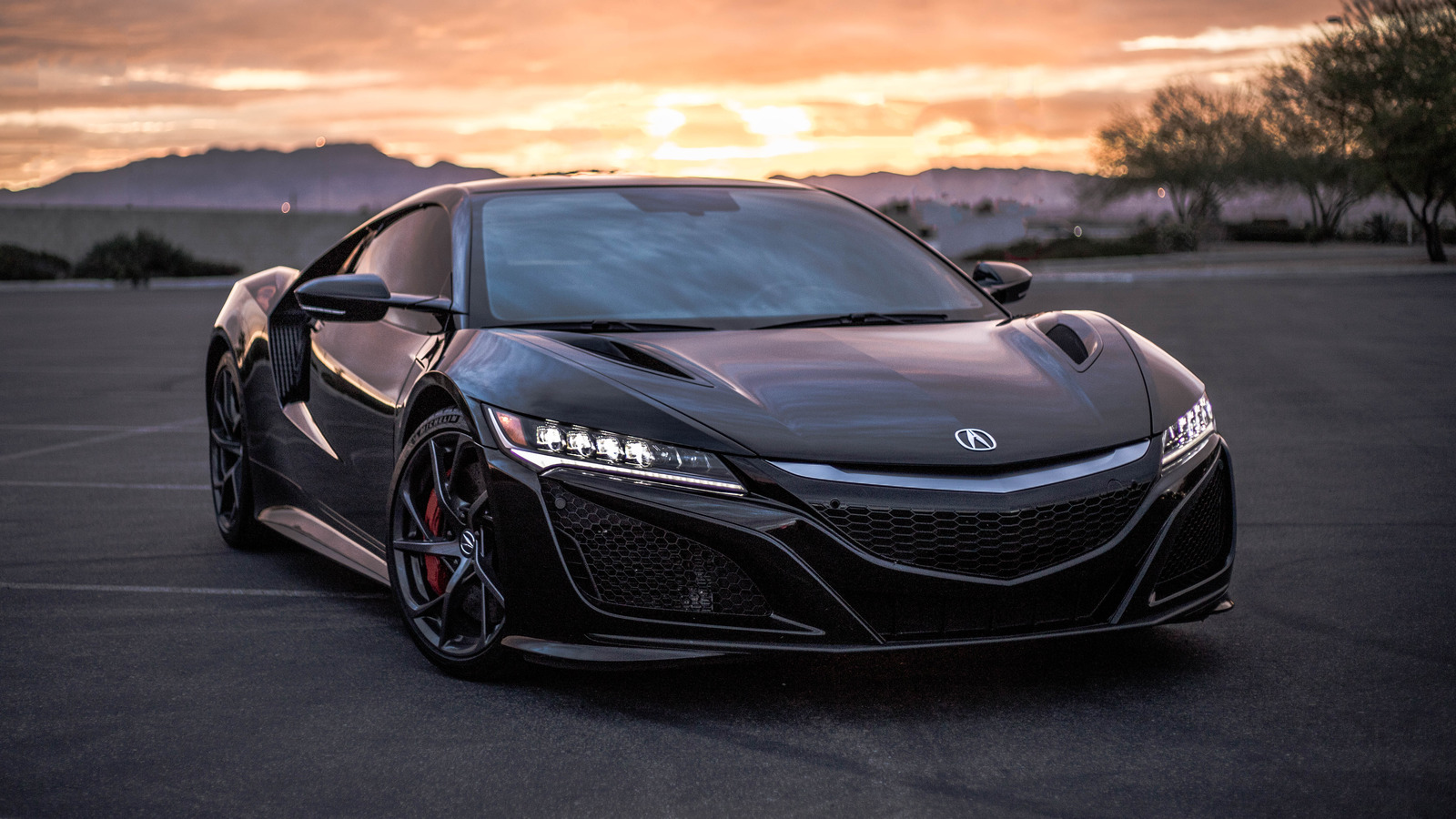
15. **Acura MDX (2010-2013 with SH-AWD): The Unexpected Exception**Honda and its luxury counterpart, Acura, have long enjoyed an enviable reputation for producing some of the most reliable vehicles in the automotive world. This sterling reputation often leads buyers to assume that any Acura product will be a safe bet, even when purchased used. The MDX, in particular, is generally seen as a capable and dependable luxury SUV that upholds this strong brand image.
However, even brands with impeccable reliability records can have problematic generations, and the Acura MDX from 2010-2013, specifically with the Super Handling All-Wheel Drive (SH-AWD) system, is a notable exception to Acura’s usual standard. Alan Gelfand, a specialist mechanic, explains the specific pitfalls of this generation: “The SH-AWD models from this generation suffer from transmission problems, as well as expensive AWD system breakdowns.” These are not minor glitches but fundamental mechanical failures that can be incredibly costly to rectify and significantly impact vehicle performance.
Specialist mechanic Alan Gelfand emphasizes that “The specific model years of Acura fail to meet the reliability standards that the brand is known for,” a statement that directly challenges the commonly held perception of Acura’s bulletproof dependability. This is a crucial distinction, as Millennials, often influenced by brand reputation, might otherwise gravitate towards an MDX from this era without understanding its specific vulnerabilities.
Given these significant flaws, the expert advice for prospective buyers is unequivocal and practical: “If you want an Acura MDX, pay a little more for a later model. It will prove far more dependable than its older siblings.” This recommendation underscores the vital importance of conducting thorough model-year-specific research, even when considering vehicles from typically reliable brands, to avoid inheriting a potentially costly and frustrating legacy of unexpected mechanical issues.
Car Model Information: 2022 Acura MDX Technology Package
Name: Acura MDX
Manufacturer: Honda
Production: 2000–present
ModelYears: unbulleted list
Class: Executive car,crossover SUV
BodyStyle: SUV
Predecessor: Acura SLX
Caption: 2022 Acura MDX Technology (US)
Categories: 2010s cars, 2020s cars, Acura vehicles, All-wheel-drive vehicles, All Wikipedia articles written in American English
Summary: The Acura MDX is a mid-size luxury crossover SUV with three-row seating produced by the Japanese automaker Honda under its luxury Acura division since 2000. The alphanumeric moniker stands for “Multi-Dimensional” luxury. It has ranked as the second-best selling mid-size luxury SUV after the Lexus RX in the U.S.
The MDX was introduced on October 5, 2000 as a 2001 model, replacing the slow-selling U.S.-only body-on-frame SLX, based on the Isuzu Trooper. In Japan, it was made to replace the Honda Horizon (also based on the Trooper) which was discontinued in 1999. In 2003, the vehicle went on sale in Japan and Australia as the Honda MDX; sales with Honda badges ended with the introduction of the second generation three years later.
Get more information about: Acura MDX
Buying a high-performing used car >>>
Brand: Acura Model: MDX
Price: $37,153 Mileage: 45,037 mi.
The generational chasm in automotive desirability isn’t just about aesthetics or nostalgia; it’s a profound reflection of evolving values and economic realities. For Millennials, the allure of a luxury vehicle—be it a classic Boomer coupe or a seemingly affordable used SUV—is quickly overshadowed by the specter of hidden costs, crippling maintenance, and environmental impact. Their discerning approach champions practicality, long-term financial wisdom, and sustainability over fleeting status symbols. As the automotive world continues to evolve, understanding these shifts is crucial, illuminating why many once-cherished, or seemingly accessible, luxury rides now sit squarely on the “avoid” list for a new generation of car buyers.

